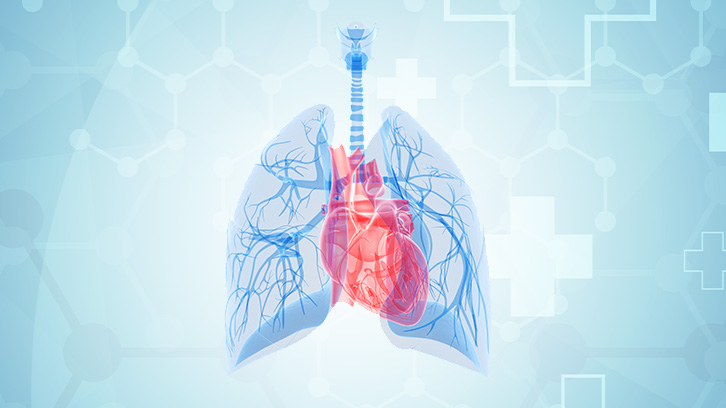Pulmonary Hypertension and Interstitial Lung Disease: Diagnosis and Disease Management

Pulmonary hypertension (PH) is a term for high blood pressure in the blood vessels feeding the lungs. The blood vessels that carry blood from the heart to the lungs become hard and narrow, making it difficult for the heart to pump the blood. PH is increasingly recognized among patients with different types of pulmonary fibrosis. The pressure in the blood vessels of the lungs can be high, even when the blood pressure in the systemic circulation (typically measured by a cuff on the upper arm), is normal. As a reminder, this blood pressure is typically reported as 120/80.
Pulmonary hypertension can cause shortness of breath, chest discomfort, and dizziness. Some of these symptoms are similar to what we see in pulmonary fibrosis, which can make pulmonary hypertension hard to recognize in those living with pulmonary fibrosis or interstitial lung disease. Pulmonary hypertension is a serious disease that can worsen over time.
Ultrasound imaging of the heart (also known as an echocardiogram) is a screening test for pulmonary hypertension. A right heart catheterization to directly measure the blood pressures in the lungs is needed to confirm the diagnosis. Estimates of the number of pulmonary fibrosis patients with pulmonary hypertension have varied throughout the years, in part because of changes to pulmonary hypertension diagnostic criteria over time.
In the early stages of idiopathic pulmonary fibrosis (IPF), 14% of patients may have pulmonary hypertension. However, more than 80% of those with very advanced disease have been reported to have pulmonary hypertension (1). There are other causes of pulmonary hypertension, which providers often also evaluate for, including underlying heart disease and other medical conditions. Identifying PH in pulmonary fibrosis is important so that accurate treatments are provided to patients.
While there is no cure for PH, treatments are available to help manage the symptoms. Treatment may include supplemental oxygen, pulmonary rehabilitation, medications, and lung transplant in some cases. Some patients require diuretics or water pills, to help remove extra fluid from the body to offload the heart and blood vessels in the lungs. Inhaled Treprostinil (Tyvaso) was recently approved by the United States Food and Drug Administration to treat pulmonary hypertension related to interstitial lung disease. The medication works by dilating blood vessels in the lungs when inhaled. The approval was based on results from the INCREASE clinical trial (2).
You can learn more about pulmonary hypertension related to interstitial lung disease by watching the recording of the Pulmonary Hypertension and Interstitial Lung Disease: Diagnosis and Disease Management from October 26, 2022. This webinar is available to watch online.
References:
1. Nikkho SM, Richter MJ, Shen E et al. Clinical significance of pulmonary hypertension in interstitial lung disease: A consensus statement from the Pulmonary Vascular Research Institute’s innovative drug development initiative-Group 3 pulmonary hypertension. Pulmonary Circulation. 2022; doi 10.1002/pul2.12127
2. Waxman A, Restrepo-Jaramillo R, Thenappan T et al. Inhaled Treprostinil in pulmonary hypertension due to interstitial lung disease).
